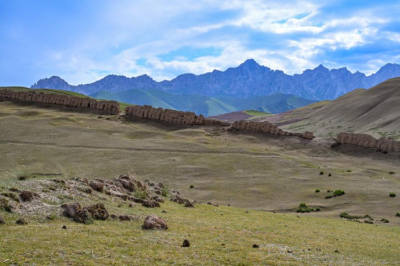EDUCATION POVERTY ALLEVIATION General Secretary Xi Jinping said that knowledge is required to alleviate poverty, and that in order to fundamentally escape poverty it is essential to improve the qualities of the poor people. In recent years the Tibet Autonomous Region has attached great importance to education infrastructure and has increased investment in this area. It has strengthened the standardization of schools and the construction of boarding schools; it has implemented reform plans for weak schools; and has prioritized school construction in resettlement areas for poverty alleviation. According to statistics, since the "Twelfth Five-Year Plan" (2011-2015) aid departments at all levels have provided 1.274 billion yuan (0.194 billion US dollars) in aid funds, helped construct 485,700 square meters of school building, donated 490,000 books and reference materials, and helped build 50 laboratories. Tibet has already implemented 15 years of free education from kindergarten to high school. Kindergarten enrollment rate in Tibet increased from 45.2% in 2012 to 66.24% in 2016; enrollment rate for primary school across the whole of Tibet reached 99.16%; enrollment rate for high school reached 75.94%; and for higher education it was 30.26%. Tourism poverty alleviation is providing the poor with employment and entrepreneurial opportunities by developing tourism resources and the tourism industry. Finally, they can escape poverty through their own hard work. Tibet is vast and has a diverse landscape. In addition, it also has the traditional Tibetan culture and religious culture. These attractions provide a natural advantage to the development of tourism. At present there are 1,669 family guesthouses owned by farmers and herdsmen in the region, of which 70 are owned by poor families. Tourism development capacity continues to improve at the 99 poverty-stricken villages with conditions for tourism development. More than 40,000 archived poor people are directly engaged in tourism services, with over 10,000 being indirectly engaged in tourism services, resulting in 26,000 escaping poverty. HEALTH POVERTY ALLEVIATION Backwards medical facilities and a lack of health personnel is the main weakness holding back the development of medical and health services in Tibet. In recent years the new funds, projects and policies provided by the National Health and Family Planning Commission of the People's Republic of China (PRC) have largely been focused on Tibet Autonomous Region and other poverty-stricken areas. Wang Pei'an, deputy director of the National Health and Family Planning Commission, demands that the burden of medical expenses be reduced for farmers and herdsmen, and that payment after treatment and one-stop payment be implemented. He said we should intensity medical personnel "group" aid work in Tibet, improving medical service capacity at aid hospitals, establishing courses and a talent team, and creating a hospital rating system there. He added that we should favor project funds to Tibet, make efforts to improve medical and health services in agricultural and pastoral areas and significantly improve the ability to diagnose and treat critical illnesses. He also said, at the same time, we should build a number of regional medical centers and key health centers; support those with no transport access and where the population is more concentrated by setting up medical posts; and improve the ability to tackle common diseases, frequently-occurring diseases and emergency treatment. Also, strengthen health education and promote good health; vigorously support the development of Tibetan medicine and help Tibet improve people's health literacy and health levels. |
- Home
- News |Tibet |Exclusive |China |World |Related News |Latest
- Documents |White Papers |Others
- Photo |Politics |Economy & Society |Culture & Religion |Human & Nature |Beautiful Tibet |Other Tibetan-Inhabited Area |Exchanges |Related
- Video |News |Documentary |Micro-Video |Entertainment
- Art
- Tourism
- In Focus
- About Tibet






